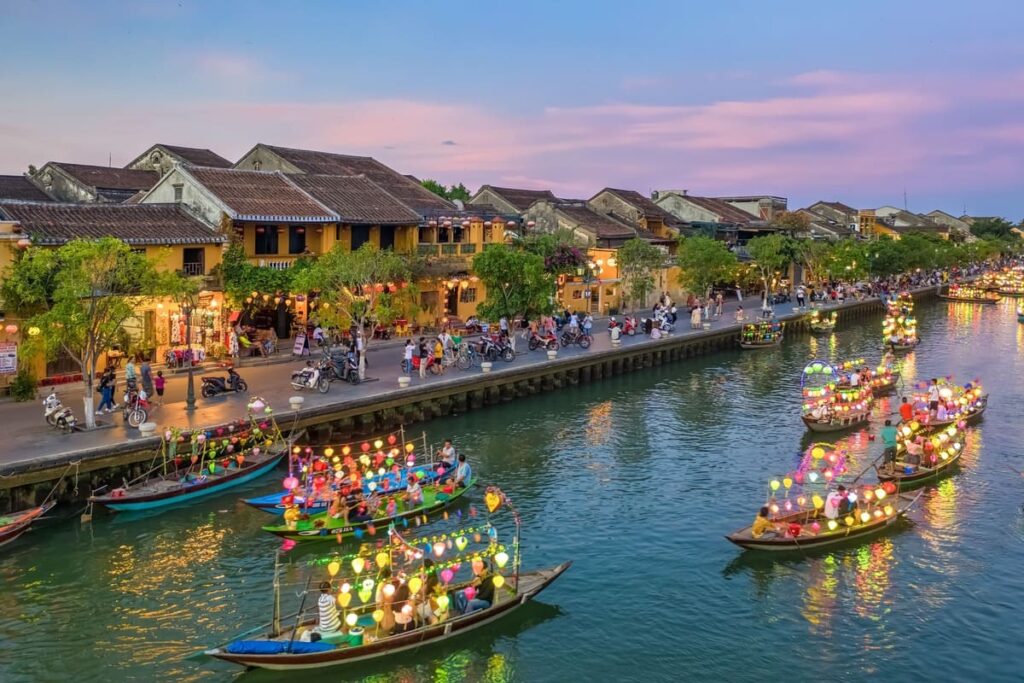Travel Guide
Why This Tropical Southeast Asian Country Is More Popular Than Ever This Year
Last Updated
After three years of lackluster results, Vietnam is back to being a global hub for solo travel and backpacking.
It warmly welcomes foreigners keen on braving the breathtaking nature, sampling the flavorful local cuisine, and immersing themselves in the culture.
It is an increasingly popular destination for travelers country-hopping around Southeast Asia, having logged over 3 million arrivals in the first two months of 2024 alone, the equivalent to a 69 percent annual growth and almost equal to 2019’s pre-crisis level of tourism.


The Land of the Blue Dragons, as it is commonly described, is set for a historical year ahead, and this is why:
This Is Why Vietnam Is Surging In Popularity In 2024
Vietnam has always been marginally famous.
It entered the annals of History when it provided a backdrop for a proxy war fought between East and West forces.
Vietnam is notorious for its diverse nature and abundance of heritage sites.
Still, it’s probably never been as trendy to visit as it is now, especially in the era of TikTok, where the ‘Vietnam’ tag alone, excluding associated tags like ‘Vietnam Travel’ or ‘Vietnam Trip’, has amassed an extraordinary 86.2 billion views so far.


The resounding success can be partly attributed to the warm weather, the friendliness of locals, and the vast jungle reserves, tropical islands and over 2,000 miles of coastline Vietnam lays claim to, but these don’t fully explain the record-breaking figures.
Perhaps most importantly, it’s diversity that remains at the front of Vietnam’s Tourism Reinassance: away from the fast-developing beach zones, it offers visitors vibrant city breaks, cultural landmarks, and a verdant hinterland dotted with rice paddies and family-oriented communities.
The Top Tourist Destinations In Vietnam


Some of the top-rated destinations in Vietnam, and the ones that best represent the country on an international stage include:
- Ha Long Bay, best described as the real-life version of James Cameron’s Pandora fantasyland, with tall limestone formations topped by patches of rainforest and undisturbed islets shrouded in fog
- Ho Chi Minh City, formerly Saigon, a sprawling metropolis with a harrowing past forever entrenched in the American mind
- Hanoi, the national capital and a cosmopolitan hub with an eclectic architectural heritage, comprising French colonial landmarks and traditional open markets
- Hoi An, a laid-back, UNESCO-listed ancient town distinct for its brightly-painted buildings, Japanese Covered Bridge and picturesque canals


- Hue, a moated Imperial City dotted with centuries-old palaces, formerly the capital of the country and still a major cultural center
- Nha Trang, a vibrant resort city unfolding along a sandy coast, dotted with towering high-rises and a stone’s throw away from some of Vietnam’s most beautiful islands
- Da Lat, the main settlement in the Central Highlands, with a temperate, eternal-spring climate, lush pine forests and clear-water lakes
- Phu Quoc, the largest island in Vietnam, home to quaint fishermen villages, jungles, and the country’s equivalent to a Disney theme park
Vietnam may be known as the land of blue dragons due to its breathtaking coastal scenery and the turquoise waters it borders, but as you can see, there’s more to see than just beaches, and local tourism authorities have certainly done a stellar job at promoting their homeland’s diverse offer.


From the lively streets of Hanoi to the thrilling theme parks of Phu Quoc, foreign visitors are becoming a permanent component in the rapidly changing demographic, something that was nearly impossible to envision two or three decades ago, when Vietnam was yet to fully open up to tourism.
With its indigenous culture, socialist-oriented values, and abundant nature, it’s always fascinated Western visitors, and in particular Americans, who typically travel to Asia to expose themselves to completely foreign environments, and hopefully get a more nuanced worldview.
Easier Entry Rules


On top of that, it’s stayed ahead of the curve on a number of travel trends lately, particularly digital nomadism – it is a global favorite on the ‘workcation’ category – and slow travel: for years, visitors had complained about Vietnam’s strict visa policy.
Up until last year, Americans and Europeans were only allowed to remain in the national territory for up to 30 days at a time. Thankfully, the Ministry of Tourism heard their pleas and extended the validity of tourist visas to three months.
Now, they are no longer forced to rush through the epic landscapes to tick off every item on an extensive bucket list in just under a month:


They can first get acclimatized, and get a proper feel of Saigon’s hustle and bustle ahead of immediatly jumping to the next spot, hop on long, scenic train rides that take up the better part of a day, or simply doing nothing in a luxury resort for a week.
Though this is yet to be confirmed, multi-entry tourist visas valid for multiple visits within a 36-month period, as well as visas on arrival, may also be rolled out soon, proving Vietnamese officials have been listening and are clearly aware of our woes as travelers:


While obtaining a visa for Vietnam is pretty straightforward – U.S. citizens can apply online ahead of traveling – the official website can be irresponsive at times, delays are common and third-parties handling applications typically charge double or triple the price for expedited services.
Vietnam Is Affordable To Visit
Vietnam’s cheap cost of living, and attractive consumer prices are just as big a draw: according to Budget Your Trip, a traveler’s daily expenses average only $61, with meals in inexpensive local restaurants costing just over five bucks, and room rates starting from a negligible $19.


If you can’t typically afford luxuriousness in Cancun or Punta Cana, where overnights cost a staggering $500 and higher, you’ll be thrilled to learn that living it up in historically cheap Vietnam will almost certainly not break the bank:
This spring, the Centara Mirage Resort in Mui Ne, 150 meters from the beach and with a winding, lagoon-style pool, costs only $71 per night to book, while the Radisson Blu Resort in Cam Ranh, one of Vietnam’s trendiest coastal zones, has Deluxe Rooms with oceanviews for only $108.
Read More:
Top 5 Travel Insurance Plans Starting At $10 Per Week
How To Easily Earn Points For Free Travel
↓ Join Our Community ↓
The Travel Off Path Community FB group has all the latest travel news, conversations, and Q&A’s happening daily!


SUBSCRIBE TO OUR LATEST POSTS
Enter your email address to subscribe to Travel Off Path’s latest breaking travel news, straight to your inbox.
This article originally appeared on TravelOffPath.com
Opinions expressed here are the author’s alone, not those of any bank, credit card issuer, hotel, airline, or other entity. This content has not been reviewed, approved or otherwise endorsed by any of the entities included within the post.
Source link

